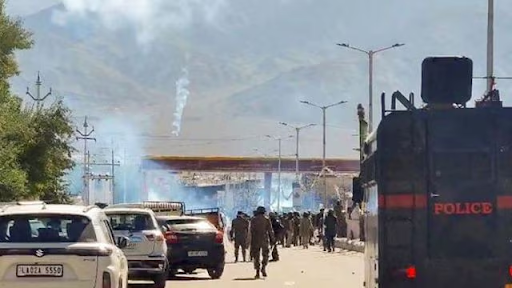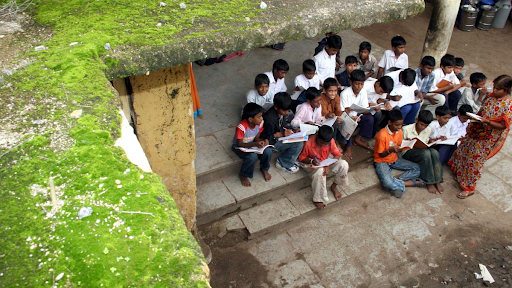Description

Disclaimer: Copyright infringement not intended.
Context:
- The Union Housing and Urban Affairs Ministry is drafting a law to consolidate all urban land and building records in Delhi under a single authority Delhi Urban Lands and Immovable Property Records Authority led by the Lieutenant Governor.
Delhi Urban Lands and Immovable Property Records Authority
Coverage:
- All notified urban areas within the geographical boundaries of the National Capital Territory of Delhi.
Constitution:
- Chairperson: Delhi Lieutenant Governor.
- Members: officials from DDA( Delhi Development Authority), MCD(Municipal Corporations of Delhi), NDMC(New Delhi Municipal Council), Delhi Cantonment Board, the Revenue Department as members.
Functions:
- To frame the guidelines for creating and maintaining urban land records.
- To appoint officers to survey all urban areas, including land, buildings, apartments, etc.
Powers:
- To carry out inquiries into property rights, and impose penalties for concealment of information.
Urban RoR( records of rights)
- The Bill will have provisions for an urban RoR( records of rights) that have the names of all holders, occupants (other than tenants), owners, or mortgagees of the land, or assignees of the rent revenue from it.
- The proposed RoR will also have the names of all government lessees or tenants, along with the nature and extent of their interests and liabilities, if any, with respect to the land or immovable property.
Will there be any conflict with NCT’s elected government?
- As per the Economic Survey of Delhi 2022-23, the National Capital Territory sprawls over 1,483 sq km, of which 1,114 sq km is designated as urban, and the rest as rural.
- Since land in Delhi is a central subject under Article 239AA of the Constitution, the proposed law will not fundamentally change who controls land policy in the capital.
Need for the consolidation
Current situation
- There is currently no urban land and buildings records law or system in Delhi.
- Rural land records are maintained under the Delhi Land Reforms Act, 1954, and the Punjab Land Revenue Act, 1887.
Non-applicability of laws:
- The 1954 Act does not apply to urbanised villages in Delhi, or to land owned by a municipal corporation (MCD or NDMC) and the Cantonment Board, or land acquired for public purposes.
- The records under the 1887 and 1954 laws contain details such as khasra number or list of fields, and khatauni or list of cultivators, which only apply to agricultural land.
Lesson from other states:
- Some like Gujarat and Maharashtra have already created a separate system for urban land records.
Multiple departments:
- Multiple agencies are responsible for land in Delhi. For instance, the Revenue Department of the Delhi government maintains the Record of Rights (RoR), a legal document that contains information about the ownership of land parcels in villages.
- Property tax records are maintained by the New Delhi Municipal Council (NDMC) and the Municipal Corporation of Delhi (MCD) for their areas.
Lack of land records:
- The Land & Development Office (L&DO) under the Union Ministry of Housing and Urban Affairs (MoHUA) has leased land for various purposes, but it does not maintain records of land conversion to freehold.
- While the Delhi Development Authority (DDA) has records for the land acquired by it for development.
Significance of the decision
- The NITI Aayog’s September 2021 report, “Urban Planning Capacity in India” highlighted the lack of accurate and usable maps for many major cities.
- As per the policy brief prepared by the nonprofit Indian Institute of Human Settlements (IIHS) in 2023 the RoR in some states are either non-existent or not updated after areas are declared urbanised because Revenue Departments believe that maintaining urban records is the responsibility of the municipality or urban development authority.
- Having such records would help in taxation and dispute resolution.
- Lack of multiple departments will be avoided as the Revenue Department ceases to maintain land records for villages once they are formally brought into the urban fold.
Benefits of digitisation of land records
Space Constraints:
- Physical storage of documents is cumbersome and inefficient. Digitalization can optimise space and enhance accessibility.
Fraud in Land Registry:
- Lack of definitive proof of ownership leads to fraudulent practices and false claims and endless litigation. For instance, About 66% of all civil cases in India are related to land and property disputes.
Lack of Single Window Title Verification System:
- Title investigation involves multiple departments and documents. A unified system accessible to all could streamline the process.
Lack of Uniformity and Poor Maintenance:
- Varying rules and languages across states hinder accessibility and understanding. Standardization and digitalization in a common language like English are recommended.
Fear of Destruction of Records by Force Majeure Events:
- Physical documents are vulnerable to natural disasters and accidents. Secure digital backups and insurance are essential for safeguarding records.

Initiatives related to land records in India
|
Bhoomi Project (Karnataka)
|
●Digitized land records and computerized management system, reducing corruption and enhancing efficiency.
|
|
Dharani Project(Telengana)
|
●Aims to integrate land records with registration and mutation processes to provide a single source of truth for land ownership.
|
|
e-Dharti portal
|
●By the Ministry of Housing and Urban Affairs allows online access to digitized land records across states.
|
|
National Land Records Modernization Program (NLRMP)
|
●Launched in 2008 by the Government of India with the purpose to digitize and modernize land records and develop a centralised land record management system.
●In 2016 it was made a central sector scheme with 100% funding by the Centre.
Salient features of DILRMP:
●A Unique 14 digit alphanumeric Land Parcel Identification Number (ULPIN) or Bhu-Aadhaar number has been assigned for a land parcel, which will serve as a pan-India number for obtaining ownership details of a plot.
●A uniform system named National Generic Document Registration System (NGDRS) has been developed for addressing the diversity prevailing across States with regards to registration of deeds.
●The Records of Rights have been translated in all the 22 scheduled languages mentioned in the Constitution to address the problem of language barriers.
|
|
Survey of Villages Abadi & Mapping with Improvised Technology in Village Areas (SVAMITVA) Scheme
|
●It is a Central Sector scheme launched on National Panchayat Day i.e 24th April 2020.
●The Ministry of Panchayati Raj (MoPR) is the Nodal Ministry for implementation of the scheme.
●In the States, the Revenue Department / Land Records Department will be the Nodal Department and shall carry out the scheme with support of State Panchayati Raj Department.
●Survey of India is the technology partner for implementation.
●The demarcation of rural abadi areas would be done using Drone Surveying technology.
●This would provide the ‘record of rights’ to village household owners possessing houses in inhabited rural areas in villages which, in turn, would enable them to use their property as a financial asset for taking loans and other financial benefits from Bank
|
|
Blockchain technology
|
●Andhra Pradesh and Telangana have initiated pilot projects to use blockchain for maintaining land records, enhancing security and transparency.
|
Conclusion:
- The successful implementation of spatial plans depends to a great extent on how well they stay in sync with the land records. Accurate and updated maps, and detailed and robust land records are essential for proper urban planning.
Read about Digital India Programme
https://www.iasgyan.in/daily-current-affairs/digital-india-programme
Sources
https://indianexpress.com/article/explained/why-the-centres-proposed-system-for-delhis-urban-land-records-matters-9450087/
https://iihs.co.in/knowledge-gateway/land-records-modernisation-urban-and-peri-urban-areas/
|
PRACTICE QUESTION
Q) Discuss the significance of effective land records management in India. How does efficient management of land records contribute to governance, economic development, and social justice?(250 words)
|











